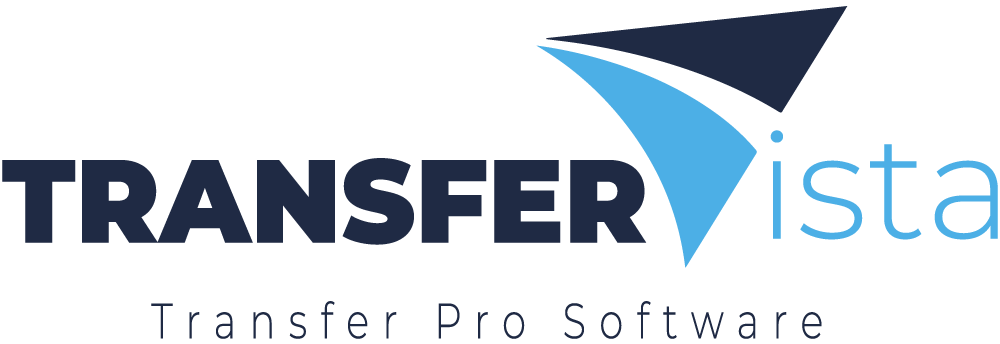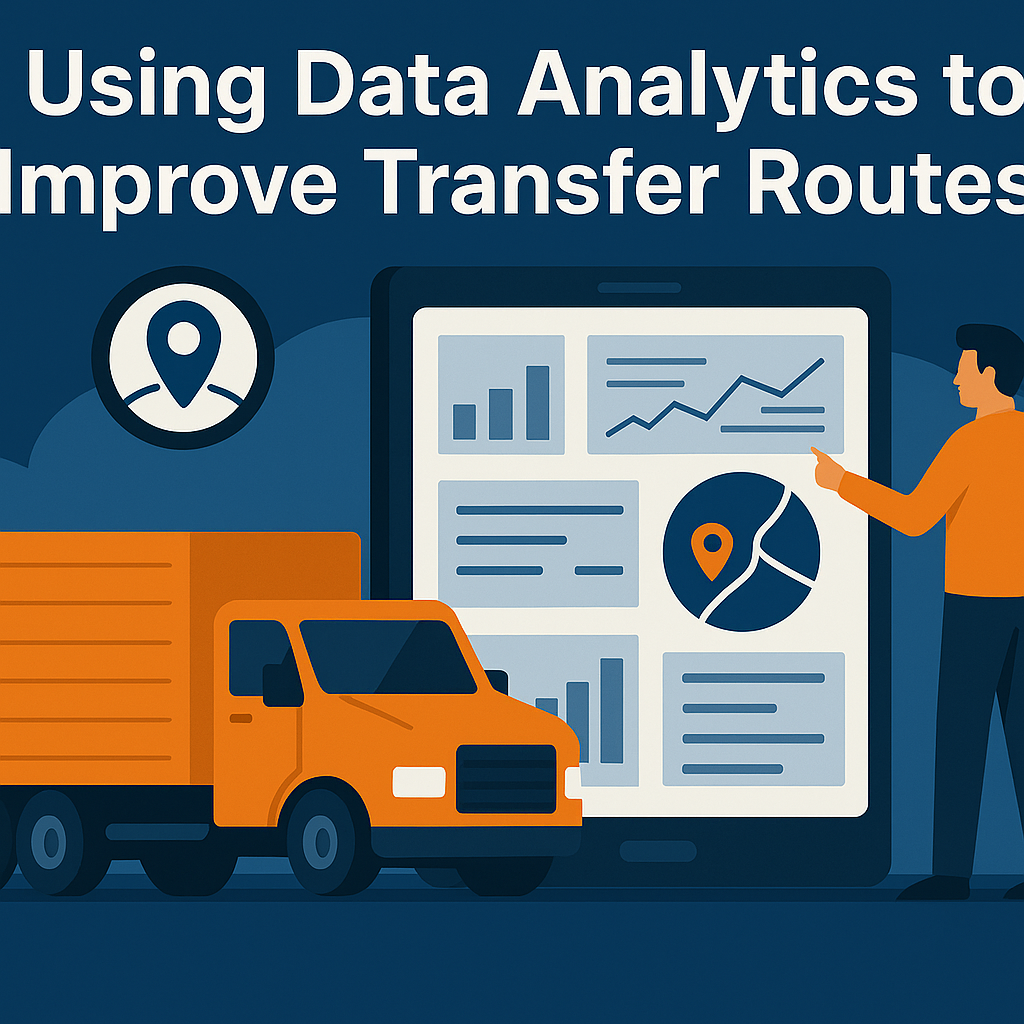Using Data Analytics to Improve Transfer Routes
In today’s competitive transportation and transfer industry, efficiency isn’t just a nice-to-have—it’s a necessity. Whether you run airport shuttles, private transfers, or a mixed fleet serving hotels and events, the way you plan and adjust your routes has a direct impact on cost, service quality, and customer satisfaction.
Gone are the days when route planning meant simply following a GPS or sticking to the same itinerary every day. Data analytics has transformed route management, offering insights that go far beyond maps and traffic reports. By harnessing real-time and historical data, operators can shorten trips, reduce fuel costs, and build a reputation for reliability.
In this article, we’ll explore why data analytics matters, what types of data you should track, how to implement analytics into your operations, and the benefits you can expect when you start using data to improve your transfer routes.
Why Data Analytics Matters for Transfer Routes
Every transfer operator knows the challenges: unexpected traffic jams, delays caused by roadworks, or wasted time driving with an empty vehicle after drop-offs. Each inefficiency costs time and money—and erodes customer trust.
Data analytics changes that dynamic. Instead of guessing which route might be faster, you can use hard data to make informed decisions.
Here’s how data analytics creates value:
- Optimized routes save time: Data reveals which paths consistently lead to delays and which ones flow smoothly, even during peak hours.
- Fuel costs go down: By reducing mileage and unnecessary detours, operators cut fuel consumption and lower their carbon footprint.
- Higher customer satisfaction: Predictable, shorter routes lead to on-time arrivals and fewer complaints.
- Strategic growth decisions: Over time, analytics can highlight underserved areas or growing demand in certain regions, guiding future expansion.
Think of it like cleaning up a cluttered room: once you have clear labels and know exactly where everything is, you spend less time searching and more time getting things done.
Types of Data to Analyze
Not all data is equally useful. When it comes to improving transfer routes, focus on the data sources that provide actionable insights:
GPS and Telematics Data
- Real-time location tracking for each vehicle.
- Speed and idle time records.
- Time spent at stops and detours taken.
Historical Booking Data
- Peak booking hours and seasonal trends.
- Most popular pickup and drop-off points.
- Average trip durations over time.
Traffic Patterns
- Congestion hotspots during different times of day.
- Areas with frequent accidents or road closures.
- Changes during major local events.
Driver Performance Metrics
- On-time rates per driver.
- Commonly chosen routes versus optimized routes.
- Stop durations and adherence to schedules.
External Factors
- Weather conditions affecting driving times.
- Construction or road maintenance updates.
- Local festivals or sporting events creating temporary congestion.
The takeaway: the more relevant data you collect, the clearer your picture becomes, allowing you to build smarter routes that adapt to real-world conditions.
Core Benefits of Route Optimization via Analytics
When you integrate analytics into your operations, the benefits show up quickly—not just on spreadsheets but in your day-to-day service quality.
Faster Trips
By analyzing historical trip data and current traffic conditions, you can choose routes with fewer delays. That means less time on the road and more trips completed per day.
Lower Fuel Consumption
A well-optimized route reduces unnecessary mileage. For large fleets, even a small percentage of fuel savings adds up to significant cost reductions over time.
Predictable ETAs
Customers value reliability. Accurate, data-driven arrival times build trust and encourage repeat bookings.
Dynamic Adjustments
Real-time analytics let dispatchers respond to sudden changes, such as accidents or road closures. Instead of sticking to a fixed route, drivers can be rerouted instantly.
Practical Tools and Methods
Data analytics doesn’t have to be overwhelming. Here are the tools and methods that make it manageable:
- Route Optimization Software: Specialized platforms can process live data and recommend the best routes in seconds.
- Machine Learning Models: Advanced systems learn from patterns—like identifying routes that are consistently delayed at certain hours—and adapt over time.
- Heat Maps and Dashboards: Visual tools that show hot spots for pickups and drop-offs, helping you plan resources better.
- A/B Testing Routes: Test alternative routes side by side. Compare metrics like trip duration, fuel used, and customer feedback to find the best options.
Pro tip: start with tools that integrate with your existing booking platform to avoid complicated setups.
Implementation Steps for Operators
Ready to use data analytics in your transfer business? Here’s a simple roadmap:
- Collect Your Data
Use GPS devices, your booking system, and traffic APIs to gather relevant data. Even basic telematics can provide valuable insights.
- Organize and Clean Data
Remove duplicate entries, fix errors, and categorize data (e.g., by route, driver, or time of day) to make it usable.
- Choose Your Analytics Tools
Look for route optimization or fleet management software that supports data integration. Popular options often include dashboards, reports, and live tracking.
- Pilot Test Routes
Start with a few vehicles and compare their performance on optimized routes versus standard ones. Collect feedback from drivers and customers.
- Analyze and Refine
Monitor results closely. Adjust routes based on insights, and repeat the process regularly. Over time, your routes will become sharper and more efficient.
Challenges and How to Overcome Them
It’s not all smooth sailing—there are hurdles to watch out for:
Data Overload
Collecting too much data without a plan leads to confusion.
Solution: Focus on a few key metrics first, such as travel time and fuel consumption.
Driver Adoption
Drivers may resist changes if they’re used to certain routes.
Solution: Explain the benefits clearly—less stress, fewer delays, and potentially higher earnings.
Integration Issues
Some older booking systems don’t play well with modern analytics tools.
Solution: Choose software with proven API integrations or consider a gradual system upgrade.
Privacy Concerns
Tracking vehicles and drivers means handling sensitive information.
Solution: Follow data protection laws like GDPR, anonymize data where possible, and be transparent with your team about what is tracked and why.
Real-World Wins: Case Studies
Case Study 1: Shuttle Company Cuts Trip Times
A regional airport shuttle service analyzed six months of GPS data and discovered two intersections that consistently caused delays. By rerouting around these points, they reduced average trip times by 18% and increased the number of daily trips without adding more vehicles.
Case Study 2: Taxi Fleet Saves on Fuel
A city taxi operator implemented a route optimization tool that analyzed driver habits and suggested shorter paths. Within three months, fuel consumption dropped by 12%, saving thousands in operating costs.
These examples show how data analytics directly impacts both the bottom line and customer experience.
Quick Tips for Getting Started
- Start Small: Focus on one route or region before expanding analytics across the entire fleet.
- Combine Data Sources: Use both historical data and live traffic feeds for the best results.
- Review Regularly: Don’t set routes and forget them. Reassess at least quarterly or after significant city infrastructure changes.
- Get Driver Input: Involve your team early. Drivers often have valuable insights that complement the data.
Bringing It All Together
In a world where time and efficiency are everything, data analytics offers a clear path to smarter transfer routes. By understanding your data, choosing the right tools, and continually refining your operations, you can deliver faster, cheaper, and more reliable services.
Here’s what to remember:
- Data isn’t just numbers; it’s a roadmap to better decisions.
- Small changes in route optimization can lead to big savings over time.
- A data-driven approach builds trust with customers and gives you an edge over competitors.
The result? Happier drivers, satisfied customers, and a transfer business that runs like clockwork.
If you’d like, I can also help you:
- Create SEO-friendly headings and meta descriptions.
- Add a comparison table for popular route optimization software.
- Generate an image prompt with a headline and visuals.


